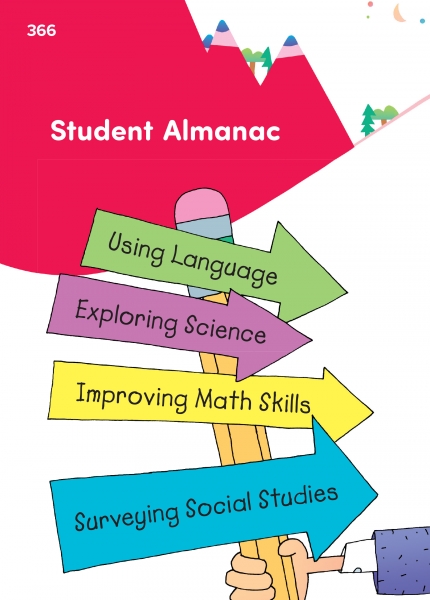Page 366 from

Start-Up Activity
The “Student Almanac” on pages 366–420 is a cross-curricular source of information that your students will learn to love. It includes fun facts about English and other languages, interesting graphics exploring the world of science, valuable tips for improving math skills, and important maps and facts related to social studies. Review this information with your students as needed.
Consider having pairs of students write down two interesting facts or details from this section to share. Then provide time for students to share their discoveries.
Think About It
“Wonder implies a desire to learn.”
—Aristotle

Start-Up Activity
The “Student Almanac” on pages 366–420 is a cross-curricular source of information that your students will learn to love. It includes fun facts about English and other languages, interesting graphics exploring the world of science, valuable tips for improving math skills, and important maps and facts related to social studies. Review this information with your students as needed.
Consider having pairs of students write down two interesting facts or details from this section to share. Then provide time for students to share their discoveries.
Think About It
“Wonder implies a desire to learn.”
—Aristotle